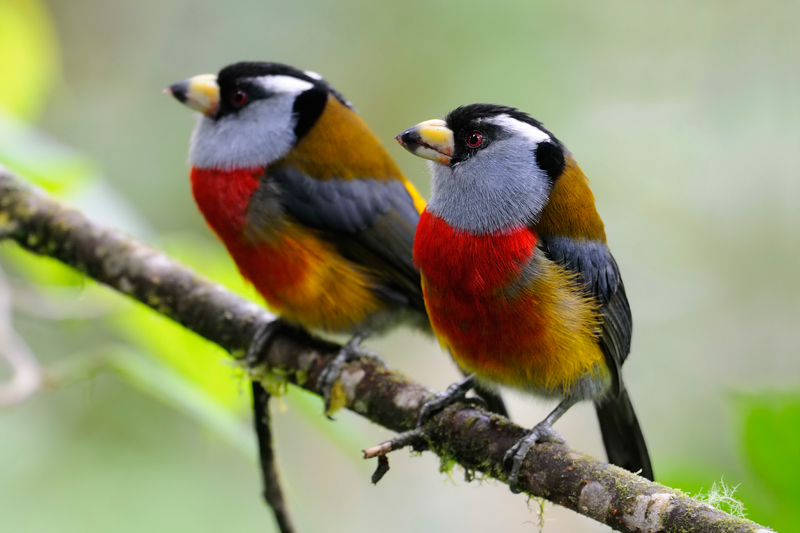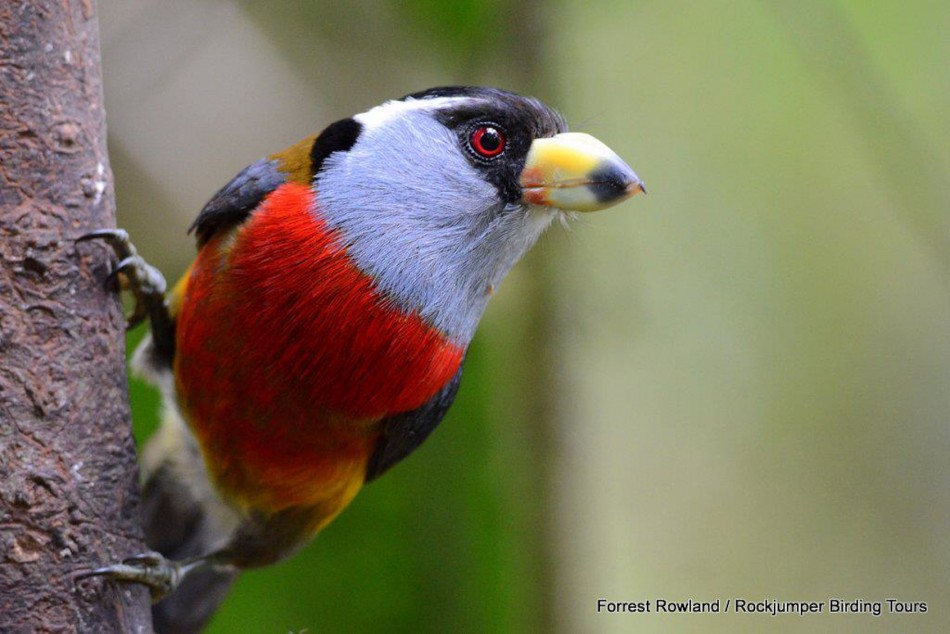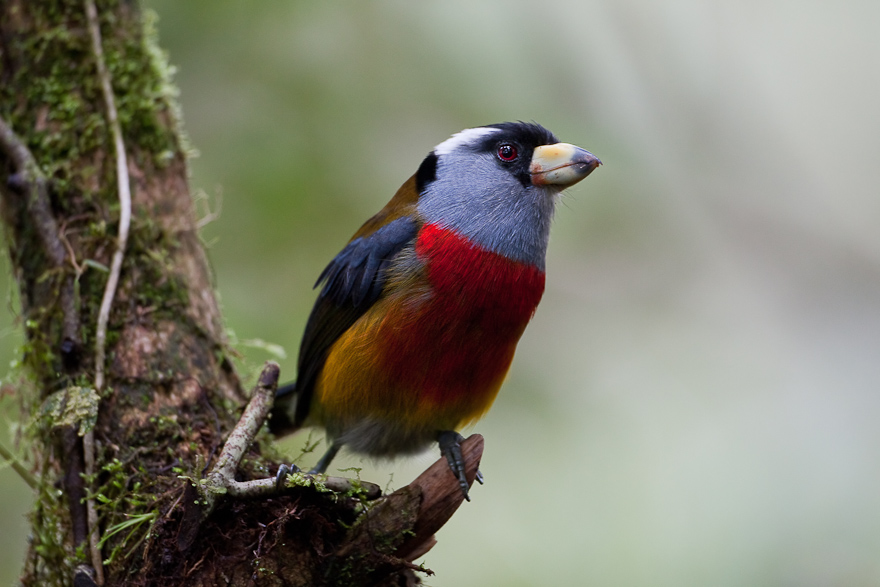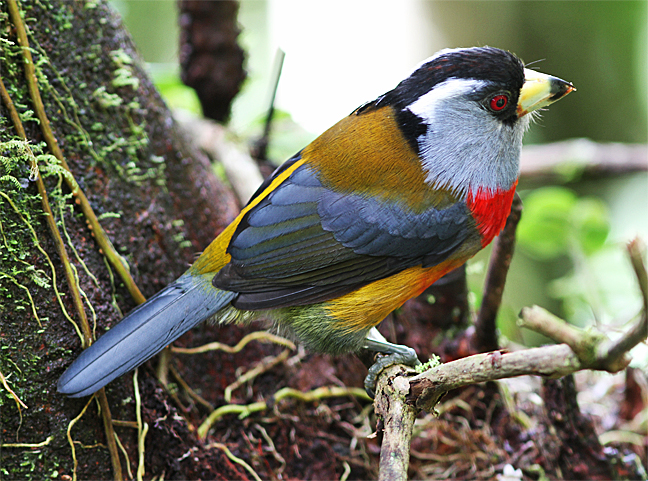
Semnornis ramphastinus
TAXONOMY
Semnornis ramphastinus Jardine, 1855. Two subspecies.
OTHER COMMON NAMES
French: Cabйzon toucan; German: Tukanbartvogel; Spanish:
Capitбn Tucбn.
PHYSICAL CHARACTERISTICS
9.8 in (25 cm); 3.0–3.9 oz (85–110 g).
DISTRIBUTION
Southwestern Colombia and western Ecuador.
HABITAT
Wet subtropical forest and montane tropical forest, secondary
growth, and more open pastures with scattered fruiting trees.
BEHAVIOR
Usually in or around fruiting trees and bushes in groups of up to
six birds, typically a territorial pair and their young. Relatively
heavy, hopping about on branches or climbing up through low,
tangled, bushy growth, from almost ground level to the high
canopy. Sometimes associates with other species in small mixed
groups if they pass through the territory. Sometimes perches
still for long periods, remaining very inconspicuous.
FEEDING ECOLOGY AND DIET
Mostly eats fruit, but takes many insects as well. Eats fruits of
62 species of plants, many of them typical of disturbed areas
(only 11 of pristine forest); many of these are seasonal and insects
and other invertebrates must be relied upon at times.
May trespass into neighboring territories to reach fruiting trees
if not challenged.
REPRODUCTIVE BIOLOGY
Song is series of low, short, foghorn-like notes repeated for
several minutes, often in duets, but these are simple simultaneous
songs and not properly synchronized. Tail often cocked;
this and many short calls help birds keep in touch in dense foliage.
Territory established around roosting holes in dead tree;
breeding pair then drives away older offspring and other adults
from group, but some retain one or two helpers. Primary female
remains near nest; number of eggs unknown; incubation
about 15 days, mostly by male, but also by primary female and
helpers. Young fed by pair and helpers, if present, for 43–46
days. Young beg for food for some time afterwards; if second
brood is reared, young from first remain as helpers while still
begging for food themselves at times. In next breeding season,
these older young disperse to establish new groups while
younger offspring remain.
CONSERVATION STATUS
Near Threatened; occupies only some 7,700 square miles
(20,000 square kilometers), but still common in parts of that
small range; suffers from trapping and loss of habitat.
SIGNIFICANCE TO HUMANS
Trapped as cage bird.
Photo Gallery of - Toucan barbet




 Animalia Life
Animalia Life